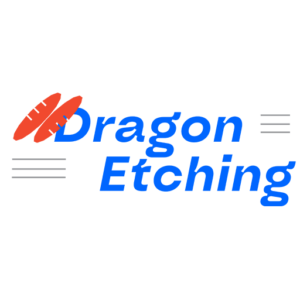
Spring steel is a type of high-carbon steel that is specifically designed to exhibit excellent elasticity and return properties. In this article, we will explore the specific features of spring steel as a material in chemical etching and delve into common spring steel alloys used in the market.
Characteristics when chemically etching Spring Steel:
Spring steel is a versatile material that can be easily etched using chemical methods. Some of its notable characteristics during chemical etching include:
High corrosion resistance: Spring steel has excellent resistance to corrosion, making it an ideal material for etching applications. It can withstand prolonged exposure to acidic solutions used in the etching process without degrading its integrity.
High tensile strength: Spring steel has high tensile strength, which makes it capable of withstanding high loads and stresses. This feature is crucial in ensuring that the material can return to its original shape after being deformed.
Good machinability: Spring steel is easily machinable, allowing for precise etching and forming of intricate shapes and patterns.
Good fatigue resistance: Spring steel has good fatigue resistance, meaning it can withstand repeated loading and unloading without experiencing material failure.
View or download our Photo Chemical Etching White Paper How-to Guide
Characteristics of Spring Steel:
Apart from the above features, spring steel has other notable characteristics that make it a popular material in many industries. These include:
High yield strength: Spring steel has a high yield strength, which makes it capable of withstanding high stress and load conditions without experiencing plastic deformation.
High elastic limit: Spring steel has a high elastic limit, meaning it can be deformed without experiencing permanent deformation or failure.
Good ductility: Spring steel is highly ductile, meaning it can be easily formed into various shapes without cracking or breaking.
Difference between traditional sheet metal precision processing VS Chemical etched sheet metal processing
VECO’s video to learn what metal etching is.
Comments related to etching technology:
From @chadr2604:
There is another way it involves stacking many layers of very thin material with an There is another way it involves stacking many layers of very thin material with an adhesive, pressing the stack, then either stamping or punching the blank then heating it to release the adhesive. The parts will not be as accurate the tolerance is limited to about .002″ but if its good enough its much faster.
From @chadr2604:
If you try to cut that stack with a laser you will just start a fire we had an aluminum fire trying that.
Modern precision sheet metal fabrication includes a common technique known as etching, which differs from traditional sheet metal fabrication in several ways. Here are some key differences between etching and traditional precision sheet metal fabrication:
- Principle: Traditional sheet metal fabrication typically involves mechanical processes such as cutting, bending, and punching to shape and form metal sheets. Metal etching by Metal Etching Machine , on the other hand, is a chemical process that uses specialized etchants to selectively corrode the metal surface, achieving precise etched patterns and features.
- Accuracy and Complexity: Etching offers advantages in terms of precision and complexity. By controlling the composition, concentration, temperature, and etching time of the etchant, extremely fine etching can be achieved with accuracy down to sub-micron levels. Additionally, etching allows for the creation of intricate geometries, microstructures, and patterns that may be difficult to achieve using traditional mechanical methods.
- Processing Speed and Cost: Etching generally offers faster processing speeds, particularly in large-scale production. In comparison, traditional mechanical fabrication methods may require more time and cost to achieve the same level of precision and complexity.
- Materials Compatibility: Etching techniques are applicable to a range of metal materials, such as copper, aluminum, stainless steel, and titanium. Traditional sheet metal fabrication methods may have limitations when it comes to certain materials or thicker metal sheets.
- Design Flexibility: Etching provides greater design flexibility. By incorporating techniques like photolithography or screen printing during the etching process, complex patterns and structural designs can be achieved. This makes etching suitable for applications in microelectronics, optical devices, microfluidic devices, and more.
Common Spring Steel Alloys:
There are numerous spring steel alloys available in the market, each with unique characteristics that make them suitable for specific applications. Some of the common spring steel alloys include:
1095: This alloy is a high-carbon steel alloy that is commonly used in applications requiring high strength and toughness. It is commonly used in the production of springs, knives, and other cutting tools.
1075: This is another high-carbon steel alloy that is commonly used in the production of springs and other high-strength components. It is also commonly used in the production of swords and knives.
5160: This is a medium-carbon steel alloy that is commonly used in the production of automotive springs, leaf springs, and coil springs. It is also commonly used in the production of hand tools and knives.
In conclusion, spring steel is a versatile material with unique characteristics that make it an ideal choice for chemical etching applications. Its high corrosion resistance, high tensile strength, and excellent elasticity make it a popular choice in various industries. Additionally, the numerous spring steel alloys available in the market make it possible to select the most suitable alloy for specific applications.
If you have an Spring Steel etching project that you need help with, please contact us

